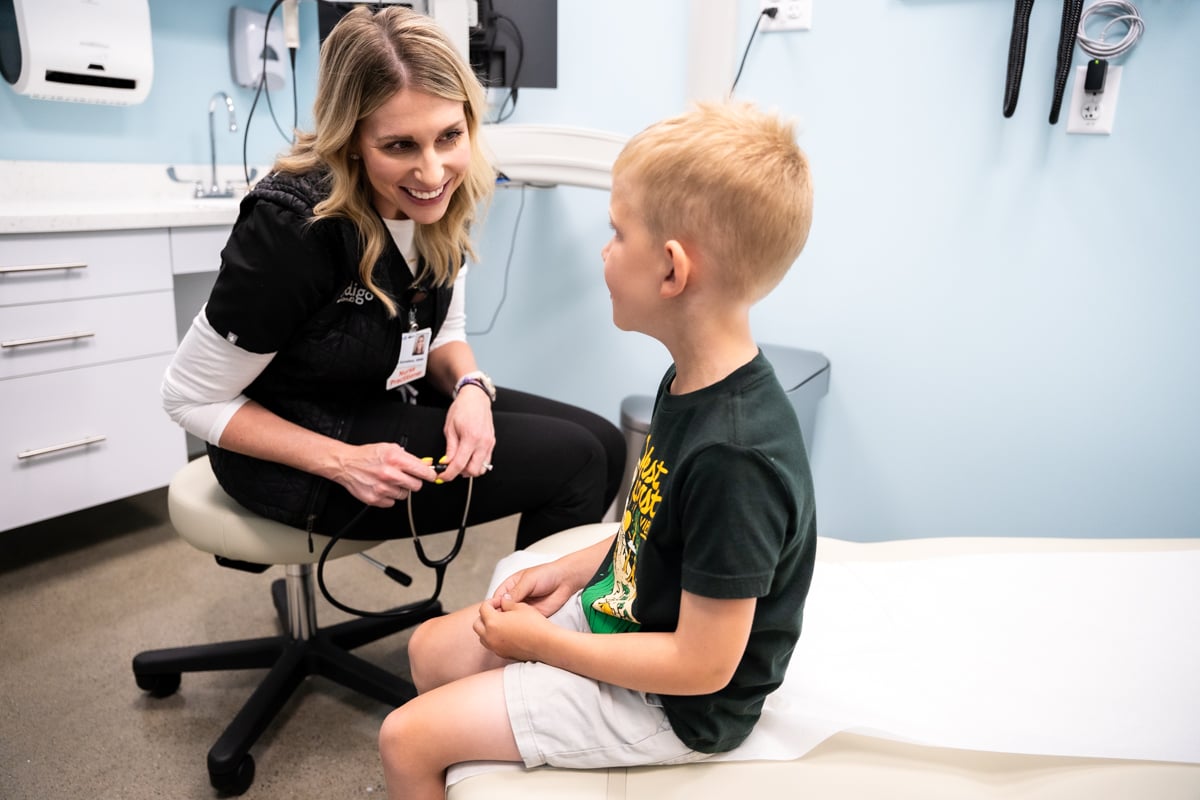Growing pains are a very real – and often frustrating – part of childhood. They can be uncomfortable and confusing for kids, and leave parents feeling helpless when their child wakes up sore or crying in the night.
The good news is that growing pains are usually harmless. Understanding what they are (and aren’t), why they happen, and how to help can make the experience a little less painful for everyone.
What are growing pains?
Growing pains are aches, cramps, or throbbing sensations that some kids feel in their legs – most often in the calves, thighs, or behind the knees. In some cases, children may also feel discomfort in their arms.
The pain can range from mild twinges to more intense aches that bring tears. Episodes may last a few minutes to several hours.
Symptoms can vary from child to child, but growing pains often:
- Affect both sides of the body
- Are more likely after a busy, active day
- Start in the late afternoon or evening, and may even wake a child at night
- Fade by morning or with rest
- Do not come with swelling, redness, or limping
- Do not keep a child from participating in their daily activities
- Tend to come and go – sometimes disappearing for days or weeks before returning
Growing pains can start as early as age 3 and are most common in kids under 12.
What causes growing pains?
One of the biggest misconceptions about growing pains is that they are directly related to a child’s growth or growth spurts. The term dates back to the 1820s, when doctors believed limb aches in otherwise healthy children were caused by bones and muscles stretching during periods of growth.
The name stuck, but growth isn’t the cause.
In reality, health care experts aren’t entirely sure why growing pains happen. Some possible factors include:
- Physically active days that can leave muscles tired or overworked
- Certain body differences – such as flat feet, scoliosis, or hypermobility – that can put added stress on muscles and joints
- Vitamin D deficiency or low bone density, which may affect muscle and bone health.
- Emotional factors, such as anxiety or stress
- Family history – children are more likely to experience growing pains if their parents or siblings had them
- Even though the cause is unclear, experts agree that growing pains don’t cause any lasting harm to the body.
Can footwear play a role in growing pains?
There’s no strong evidence that shoes cause growing pains, but what your child wears on their feet can affect how their legs and feet feel at the end of the day. Shoes that are too tight, too loose, or worn out can lead to muscle fatigue, achy joints, or other discomfort that might be mistaken for growing pains.
To help keep your child’s legs feeling their best:
- Make sure shoes fit well, with enough wiggle room for toes, but not so loose they slip
- Choose shoes with good arch support and cushioning
- Replace shoes when they’re worn out or the tread is uneven
- Ask a health care provider about inserts if they seem to need extra support
If your child’s leg pain is mostly during the day or when they’re active, a quick shoe check may be all it takes to help.
How are growing pains treated?
Growing pains don’t require any specific medical treatment, but there are things you can do at home to make your kiddo feel more comfortable:
- Gently massage or rub the sore area
- Use a warm heating pad or warm bath before bedtime
- Stretch leg muscles before bed, especially on busy, active days
- Offer comfort and reassurance. Sometimes a hug and a little extra attention are just as soothing as the physical relief.
- If needed, give over-the-counter children’s pain relievers, following your health care clinician’s instructions. Never give aspirin to children or teens, as it has been linked to a rare by serious condition called Reye’s syndrome.
When should I seek medical care for my child’s growing pains?
While most growing pains are harmless, it’s always a good idea to trust your instincts and check with a health care clinician if your child has unexplained or worsening pain. It’s the best way to know if what your child is experiencing is growing pains or something else.
Contact a health care professional right away if you notice:
- Severe pain
- Redness with pain
- Swelling that doesn’t improve or worsens after 24 hours
- Limping or trouble walking in the morning
- Fever
- Rash
- Unexplained weight loss
- Dark-colored urine
These symptoms could be signs of something other than growing pains that may need prompt attention.
Indigo is here for life’s little aches and pains
Most growing pains can be managed at home, but if you’re ever unsure – or if your child’s pain seems different from the usual – Indigo Urgent Care is here for you.
Our friendly clinicians can help you figure out what’s going on, offer treatment to ease your child’s discomfort, and give you peace of mind.
There’s no need to wait for care and the answers you need. All of our neighborhood locations are open 8 am to 8 pm every day, including weekends. Simply walk in or book a same-day or next-day appointment.
And for those times when getting to the clinic is kind of a pain, we also offer Indigo Virtual Care appointments during the same convenient hours.


